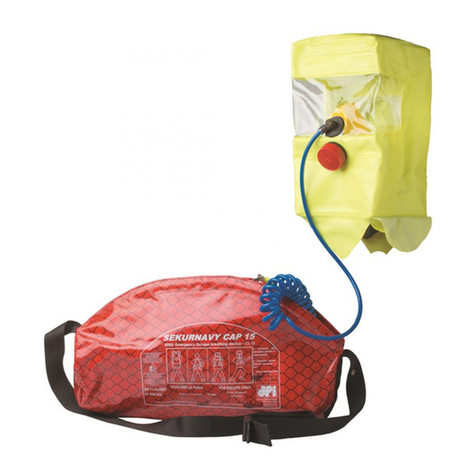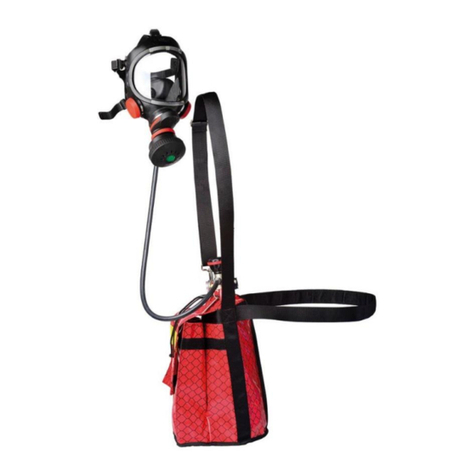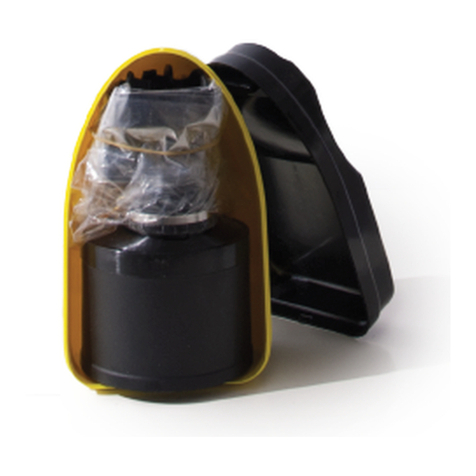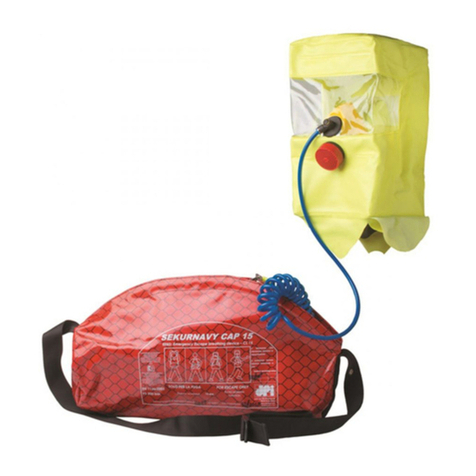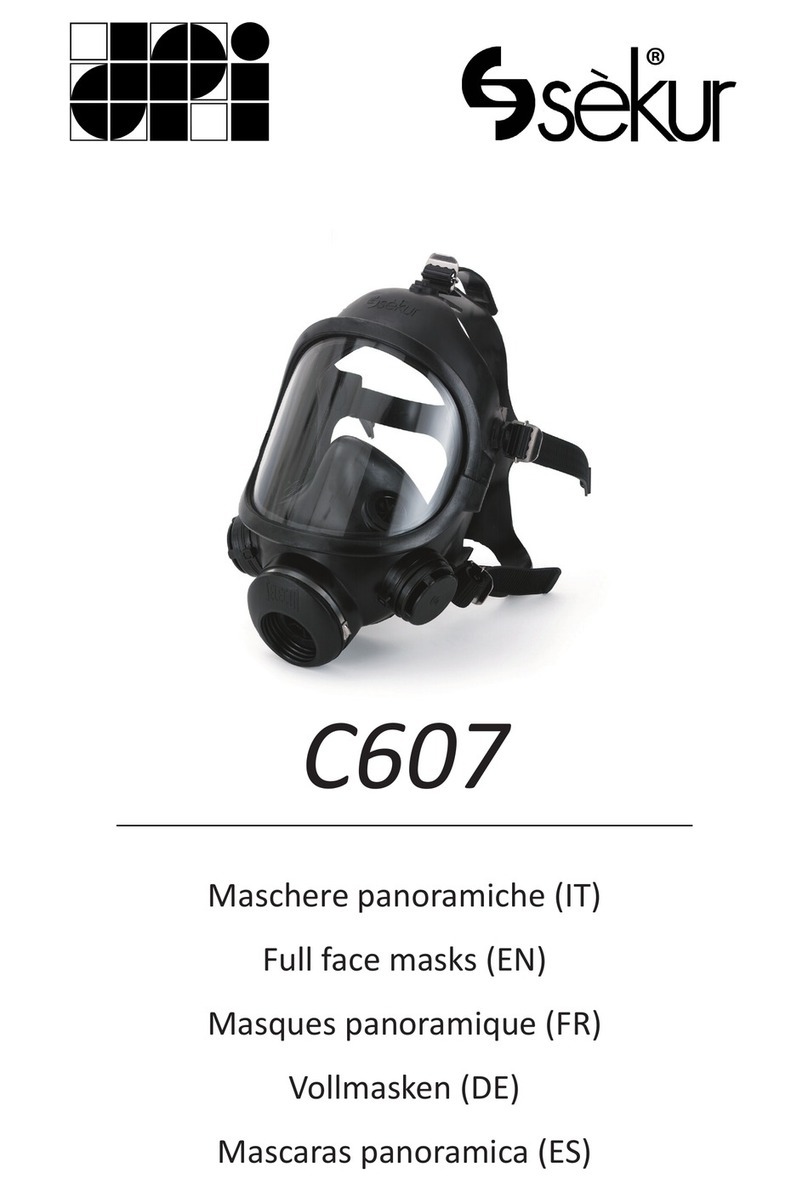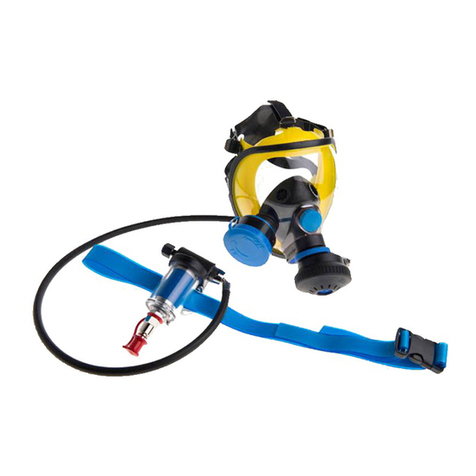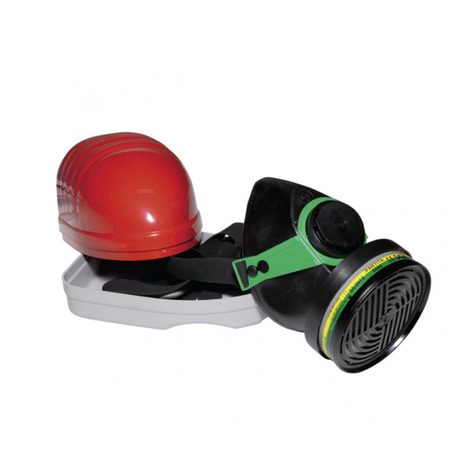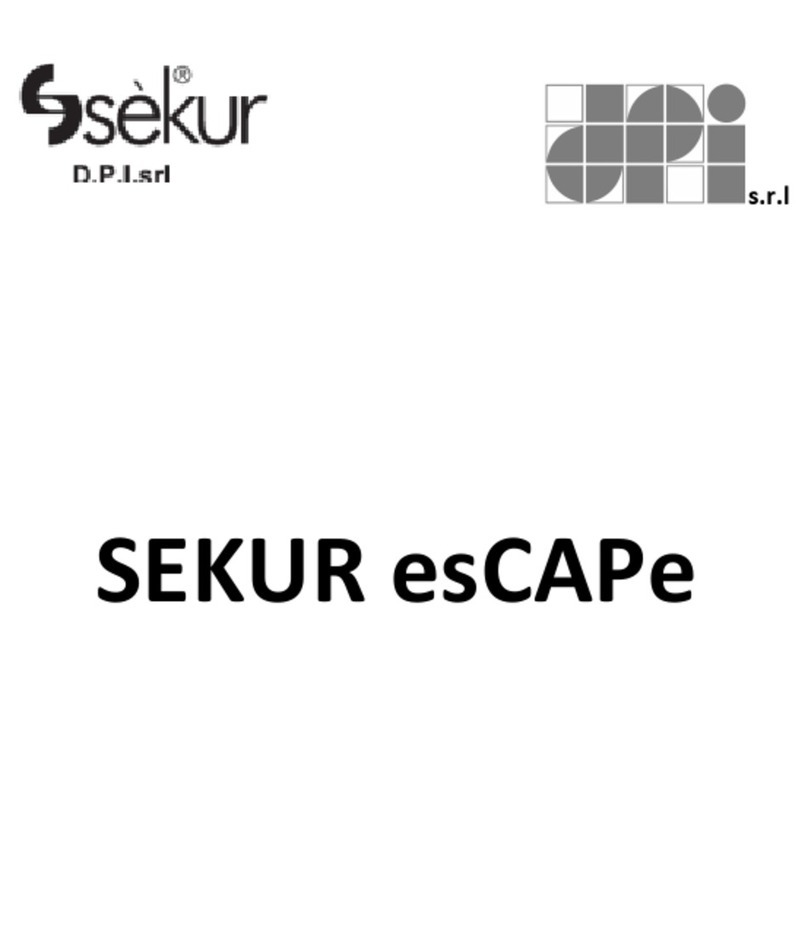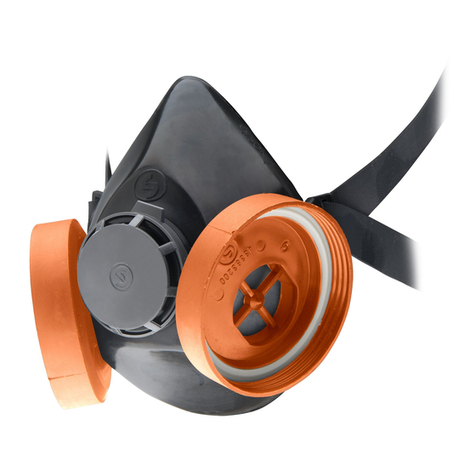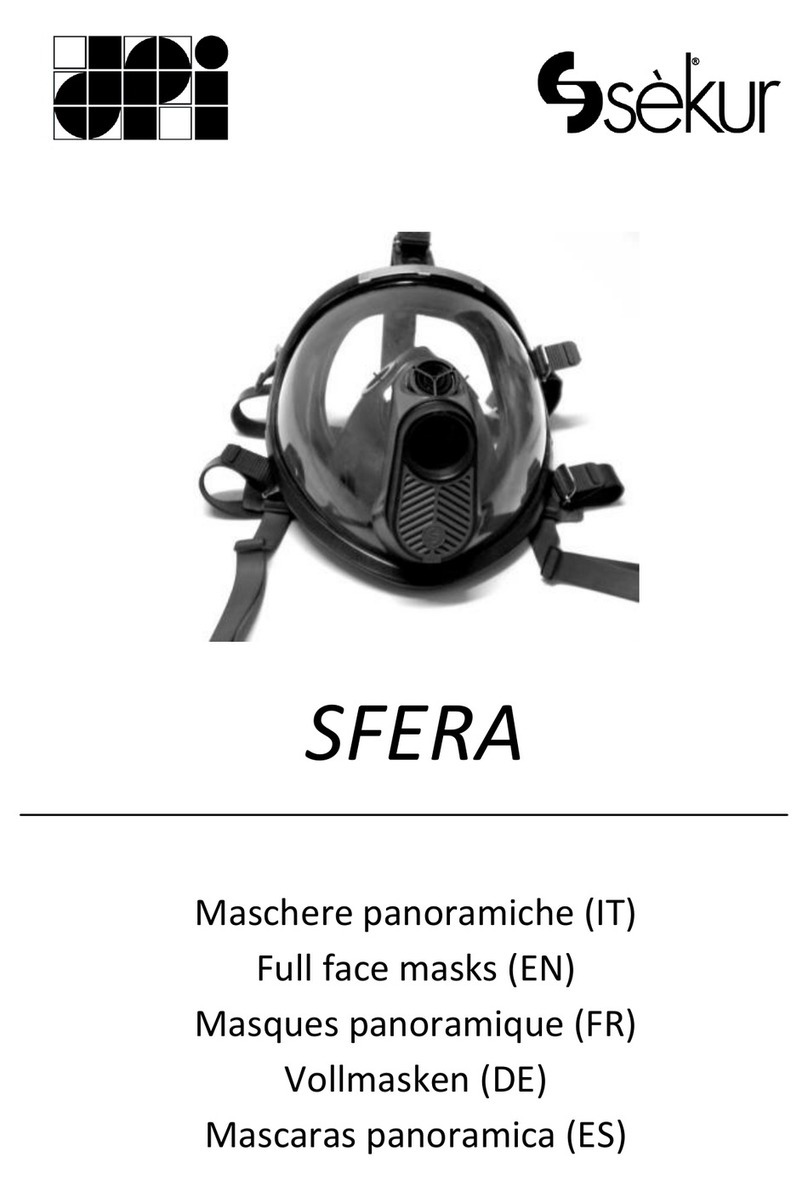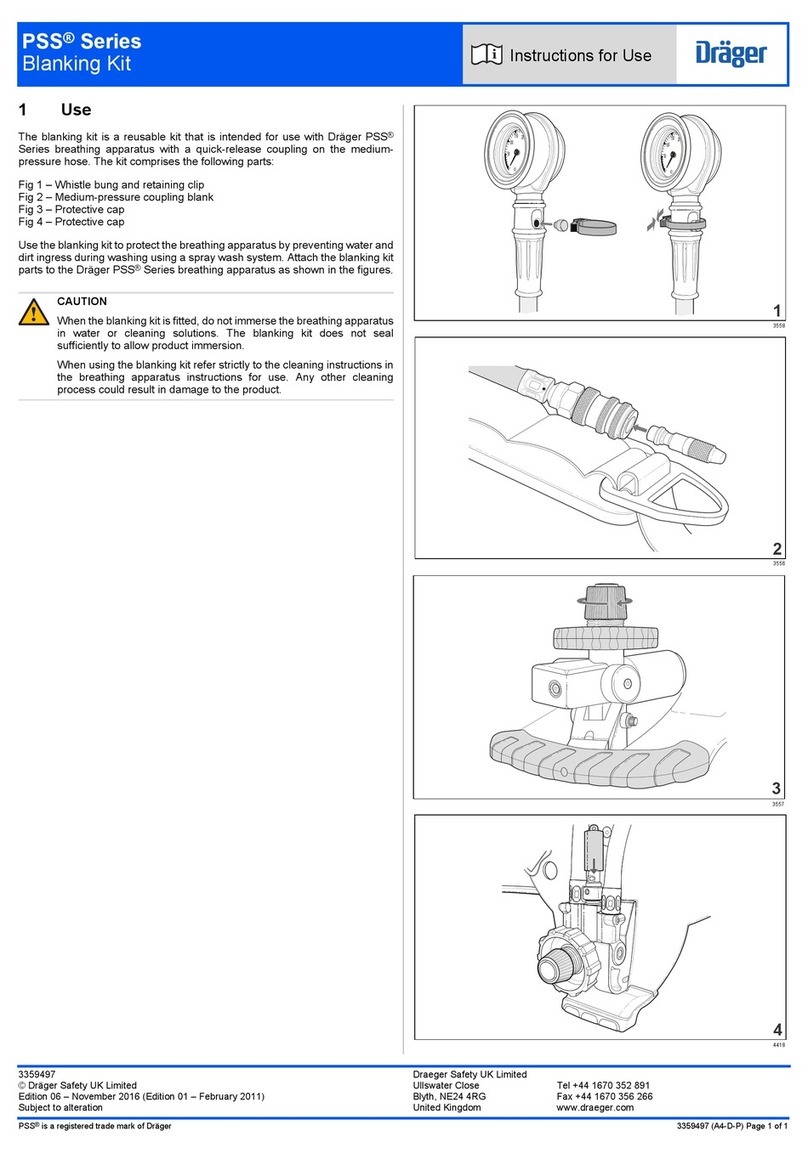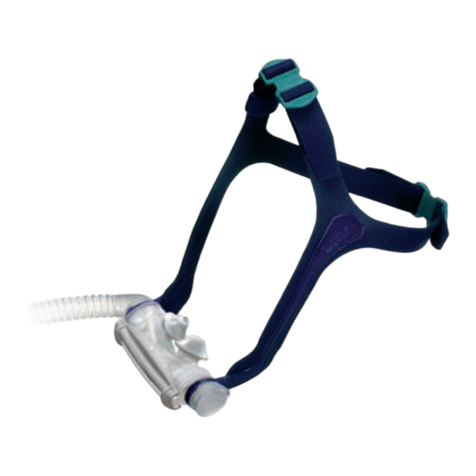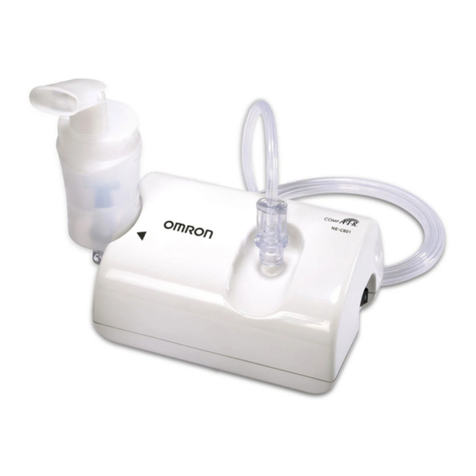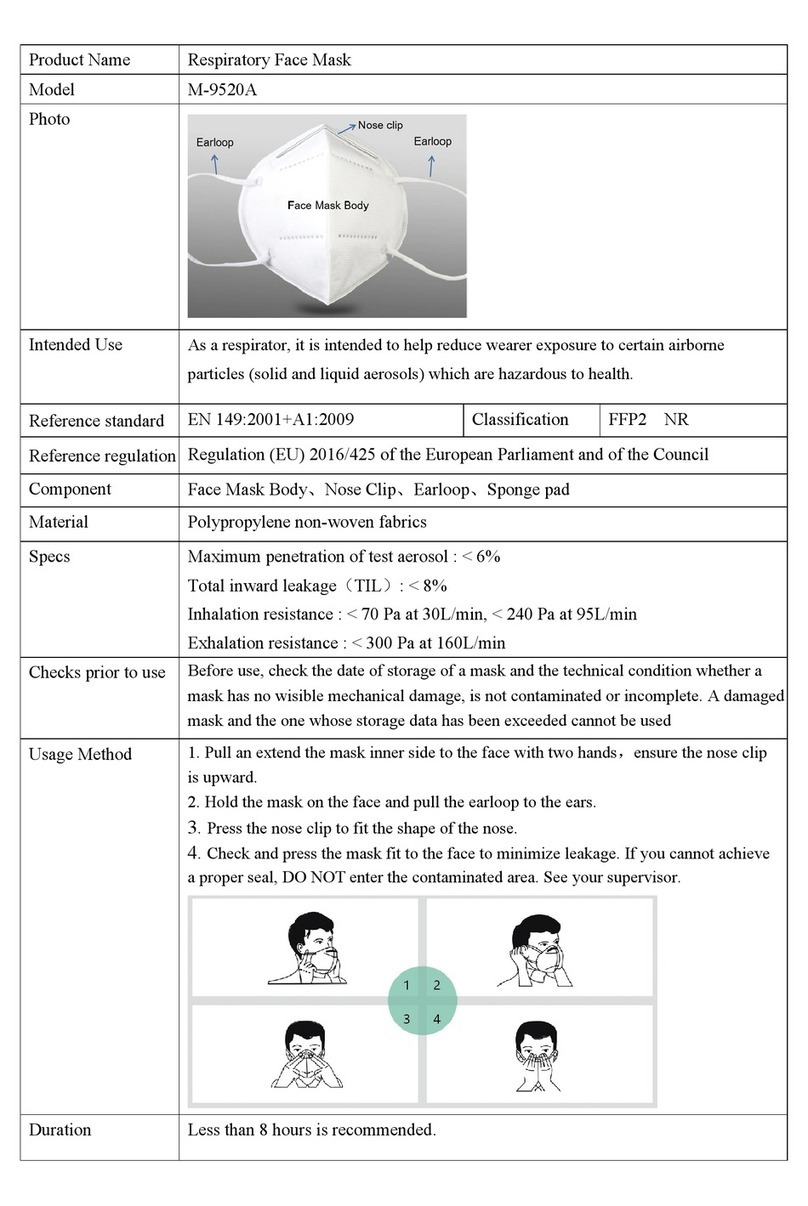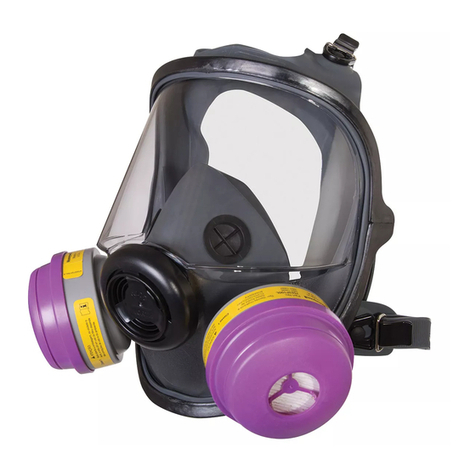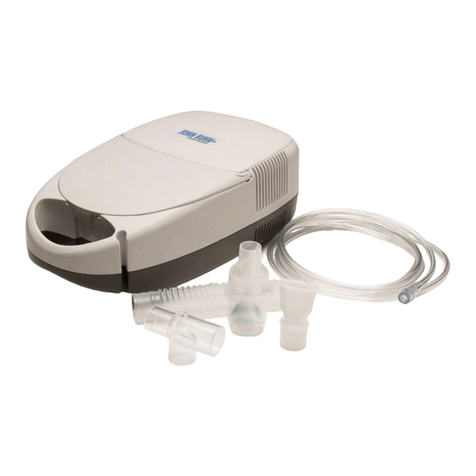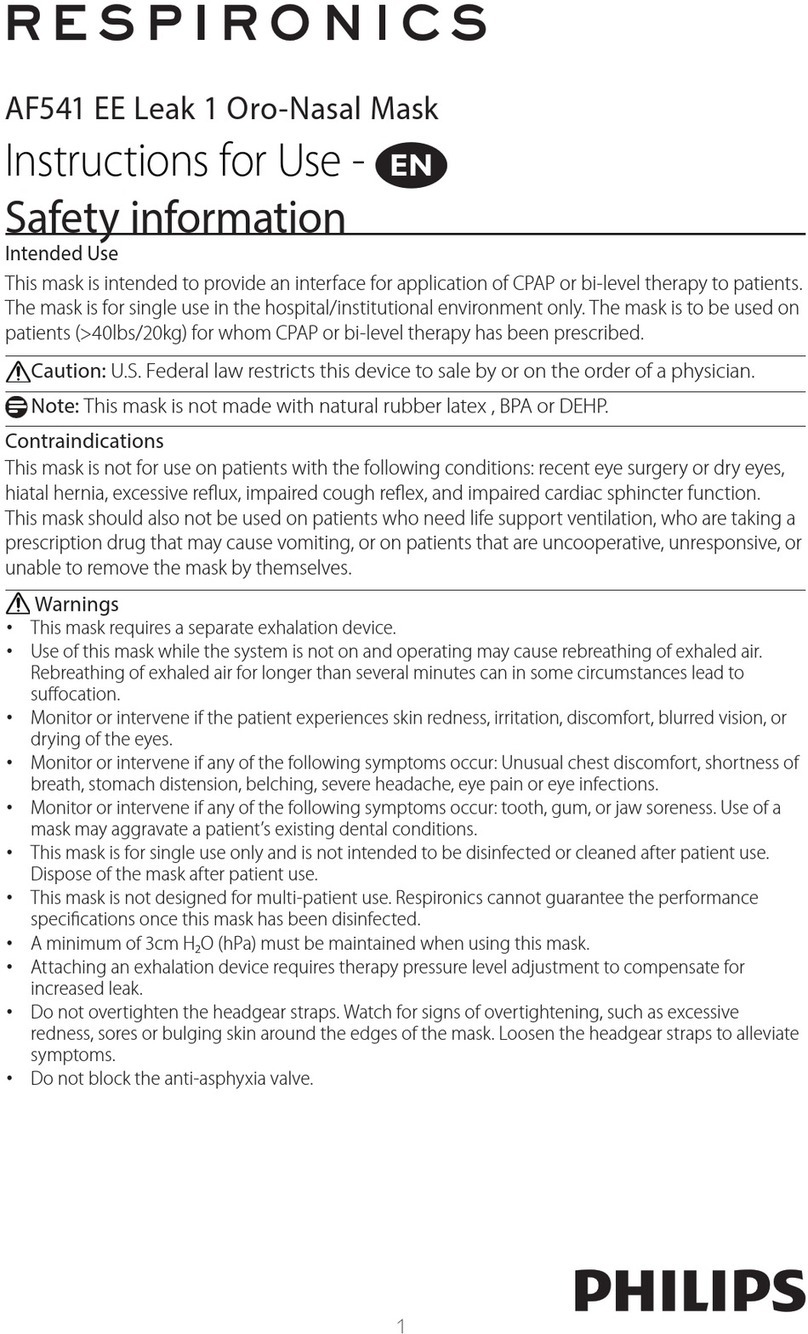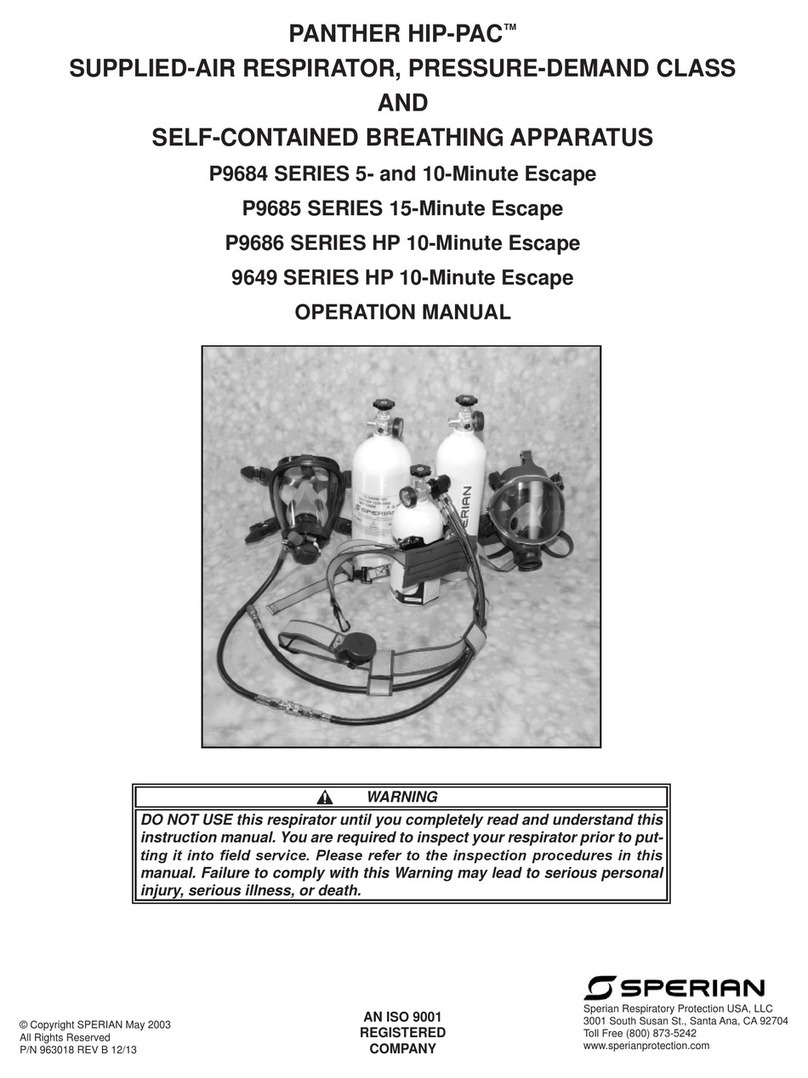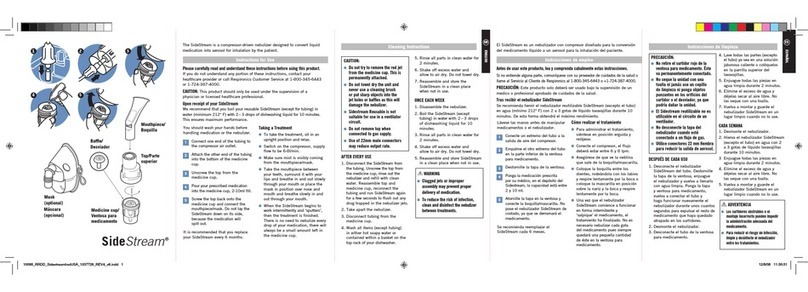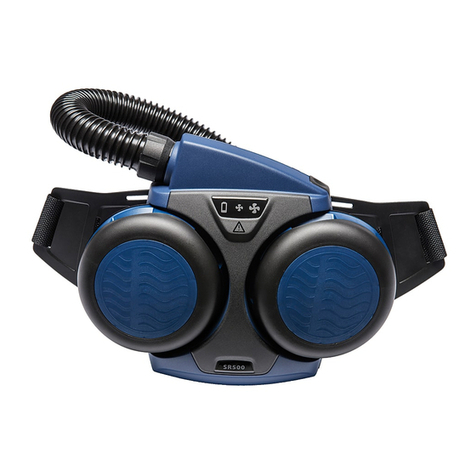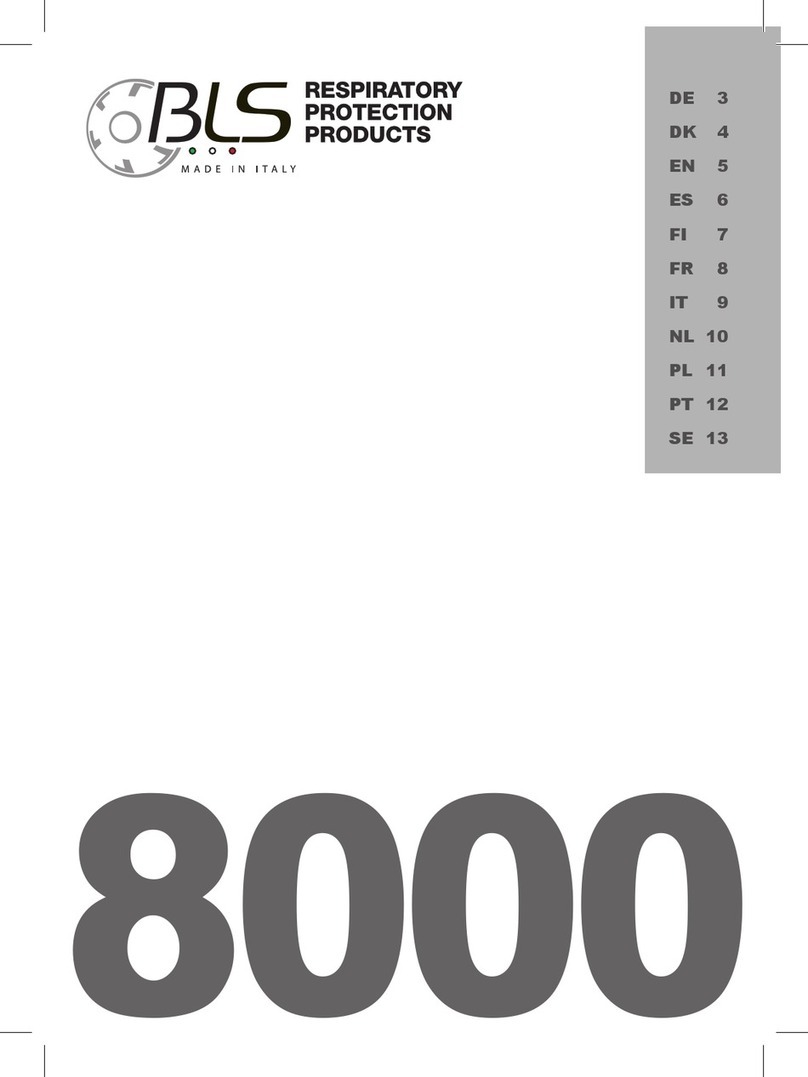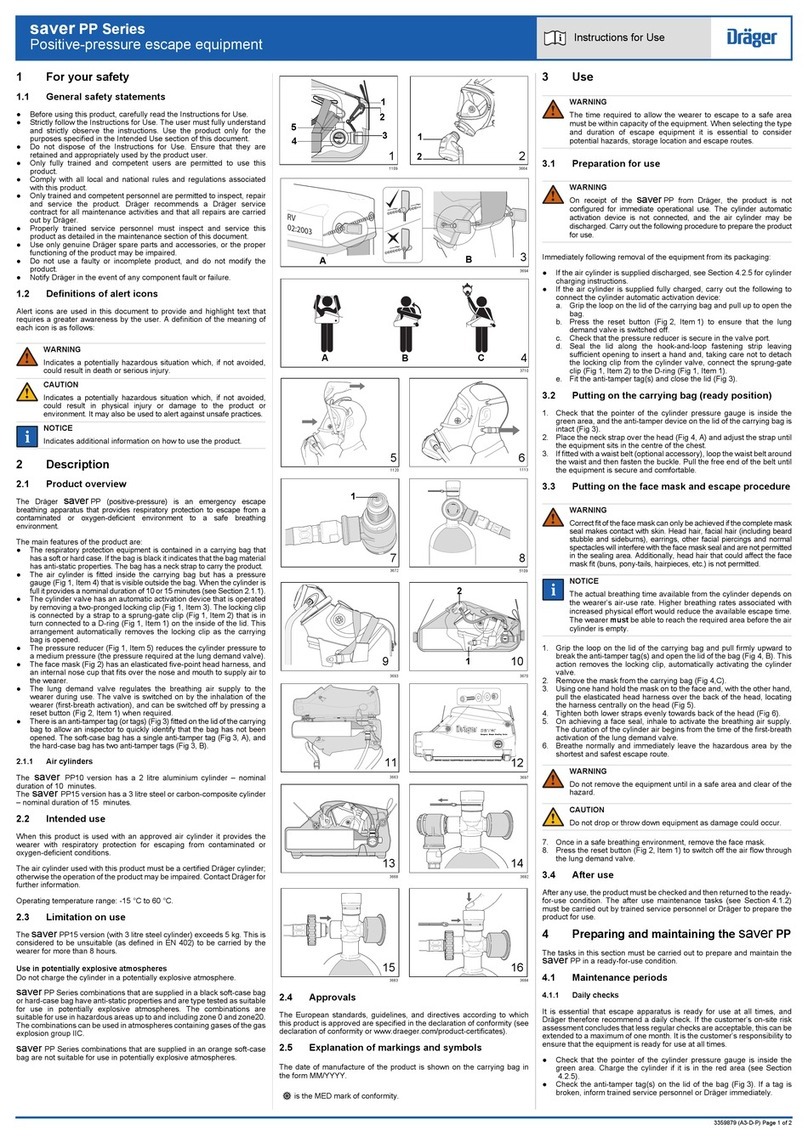1Indicazioni generali
La D.P.I. s.r.l. pur mettendo ogni possibile cura nella redazione del presente manuale, non assume responsabilità per
equivoci derivati da diverse interpretazioni del testo, errori di stampa o incompletezze.
SEKUR è il marchio registrato dei dispositivi di protezione individuale prodotti dalla D.P.I. s.r.l.. Non sono consentite
modifiche tecniche di questi prodotti.
1.1 L’impiego delle semimaschere POLIMASK presuppone la conoscenza e l’osservanza di questo manuale di istruzioni.
1.2 Le maschere SEKUR sono destinate unicamente all’impiego descritto nel manuale di istruzioni.
1.3 Riparazioni e sostituzioni delle parti componenti possono essere eseguite solo da personale specializzato,
impiegando ricambi originali SEKUR.
1.4 Si consiglia di far eseguire dal servizio clienti della D.P.I. s.r.l. o da altro personale specializzato, controlli periodici
della maschera secondo quanto riportato nel paragrafo dedicato.
1.5 La D.P.I. s.r.l. si assume le responsabilità previste dalle condizioni generali di contratto. Non si assume
responsabilità quando:
a) non siano stati effettuati controlli,
b) i controlli ovvero la manutenzione sia stata eseguita in maniera non adeguata da personale non appartenente
alla D.P.I. s.r.l.,
c) la maschera non sia stata impiegata in modo adeguato.
1.6 La D.P.I. s.r.l. non risponde dei danni causati dall’inosservanza del manuale di istruzioni.
1.7 Per quanto non menzionato, valgono le condizioni generali di contratto della D.P.I. s.r.l.. Nel caso non siate a
conoscenza delle suddette condizioni, Vi saranno inviate su richiesta dalla D.P.I. s.r.l..
1.8 La Dichiarazione di conformità dei prodotti è disponibile sul sito www.dpisekur.com nella sezione relativa ai dpi.
Importante: Omettere di seguire tutte le istruzioni e gli avvisi riguardanti l’uso del prodotto e/o indossare in modo
scorretto questo respiratore durante il tempo di esposizione, può avere effetti negativi per la salute dell’utilizzatore,
portare a gravi malattie professionali o danni permanenti.
2Norme applicabili
Le semimaschere POLIMASK sono DPI classificati in III categoria come definito nel Regolamento UE 2016/425,
rispondono ai requisiti specificati nella Norma Europea Armonizzata EN 140:98, “Dispositivi di Protezione delle vie
respiratorie, semimaschere, quarti di maschera”, e hanno come norme di riferimento:
-EN 133 "Classificazione dei dispositivi di protezione delle vie respiratorie"
-EN 148 “Raccordo filettato normalizzato”(*)
-EN 143 "Filtri antipolvere"
-EN 14387 "Filtri antigas e combinati"
Le prove di conformità secondo la relativa Norma EN e la certificazione con autorizzazione alla marcatura CE sono state
effettuate dagli Organismi Notificati:
CE 0121 BIA postf. 2043 Alte Heerstf 111, D - 5205 - St. Augustin –Germania.
CE 0158 DEKRA EXAM (ex DMT) - Essen –Germania.
CE 0426 Italcert - Viale Sarca, 336 - 20126 Milano –Italia.
La marcatura “CE 0426“ identifica l'Organismo che ne effettua il controllo sulla produzione secondo la procedura
prevista dall'allegato VIII (Modulo D) del Regolamento 2016/425 - Italcert - Viale Sarca, 336 - 20126 Milano - Italia
(Organismo Notificato n. 0426).
(*) solo per POLIMASK 330 e POLIMASK 2000 α.
3Campo di impiego
Le semimaschere sono dispositivi di protezione delle vie respiratorie, le quali combiante con gli opportuni filtri, sono
idonee alla filtrazione di gas, vapori e/o polveri. Devono essere assolutamente osservate le istruzioni per l’uso dei filtri
e dei respiratori impiegati nonché le norme e le disposizioni delle autorità competenti in materia di sicurezza.
Nell’impiego delle semimaschere della serie POLIMASK devono essere osservate di volta in volta le massime
concentrazioni di contaminante consentite nell’atmosfera ambiente (= Valore limite TLV). I valori limite sono indicati
nel manuale di istruzione dei filtri utilizzati con la maschera. Sono inoltre da osservare, come qui di seguito descritto,
particolari limitazioni per l’impiego di semimaschere con filtro.
Solo dopo aver collegato la semimaschera al filtro si ottiene un mezzo protettivo delle vie respiratorie (respiratore).
3.1 POLIMASK 100/2 e POLIMASK 2000 β
Le semimaschere di tali modelli sono dotate di due raccordi filettati (completi di guarnizione di tenuta e valvola di
inspirazione) adatti all'impiego di due filtri SEKUR della serie 200.
